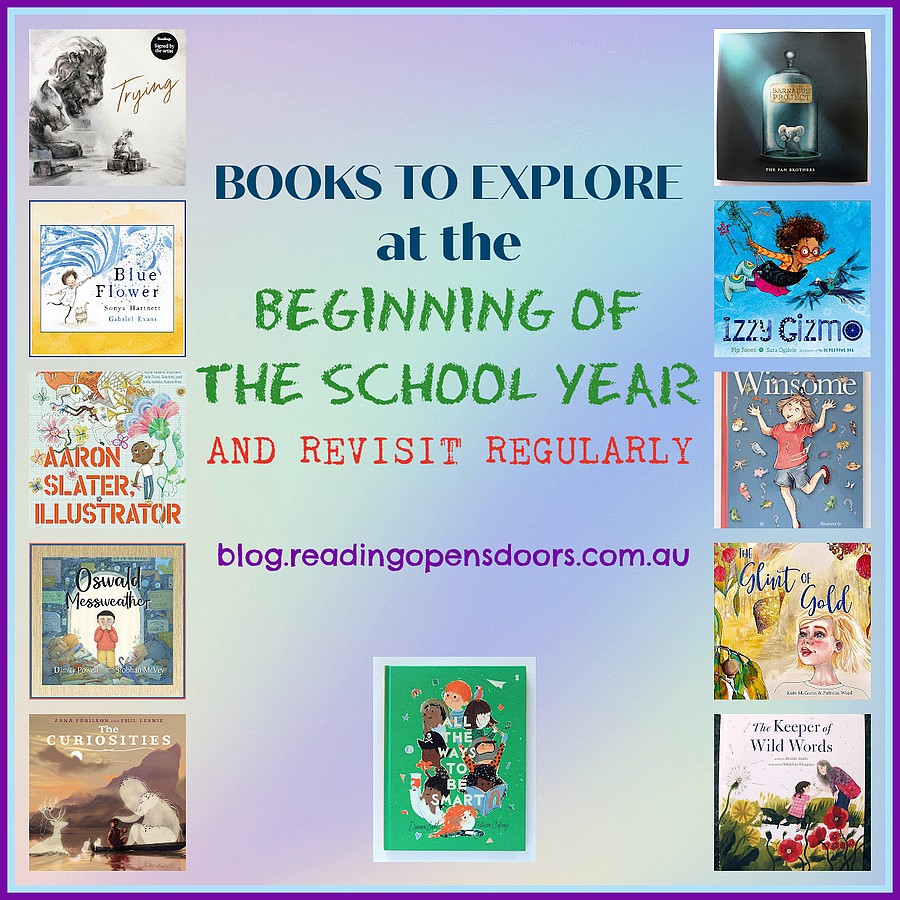
The following collection of books either promote a growth mindset, celebrate difference and inclusivity, or are a source of inspiration for creating a class inquiry task. These books serve to open up conversations about values, goals, expectations and what the classroom could look, feel and sound like. This list is by no means exhaustive and as always I am very keen to hear of any other books you would suggest should be included.
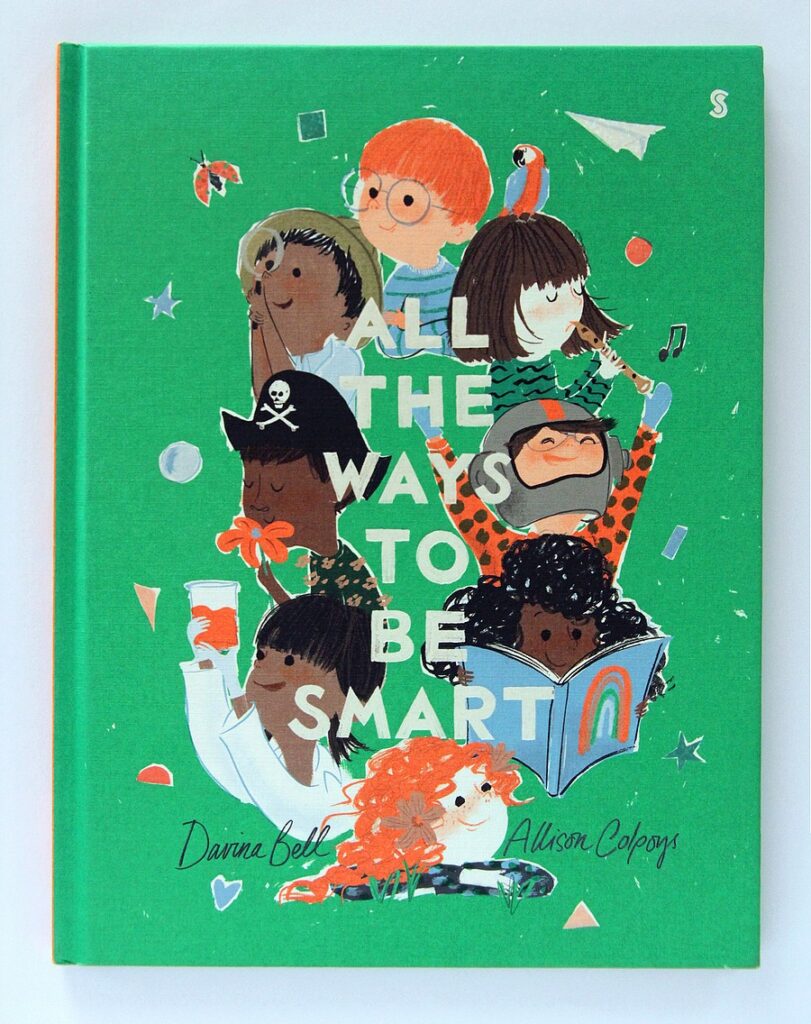
All The Ways to be Smart by Davina Bell and illustrated by Allison Colpoys is a joyful, life affirming celebration about the many and varied ways to be smart. This book explores the value of emotional, social and creative intelligence as well as qualities, such as being curious and passionate which require intelligence. The rhyming text shares the important message that thinking differently does not mean you are less intelligent and everyone is smart and special in their own and valuable way. This book, a celebration of individuality, is one that can be re-visited over and over again as it is such a delight to read. The lively illustrations are a pleasure to pore over and take in all of the whimsical details.
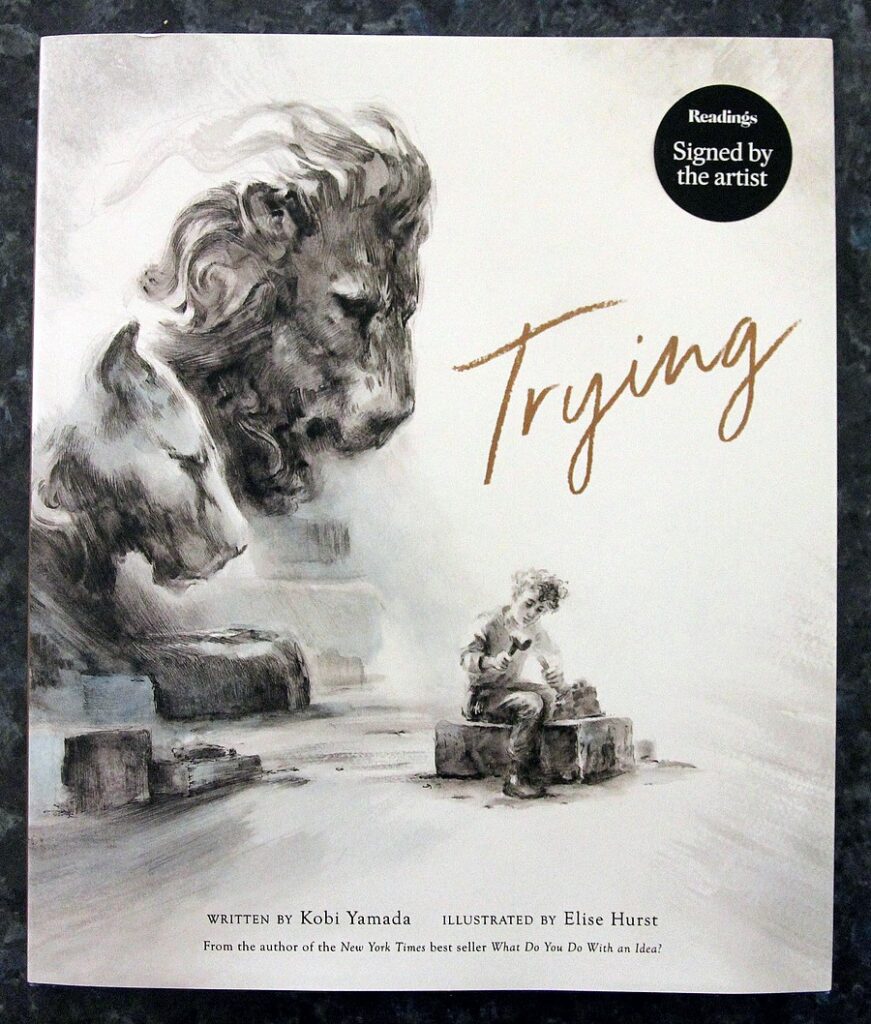
With the beginning of the school year upon us, many children are about to start school for the first time, be in unfamiliar situations and navigate unchartered territory. Trying by Kobi Yamada and illustrated by Elise Hurst is a timely picture book to share with young people who are about to begin new chapters in their lives as this story is an engaging way to promote a growth mindset. This story sensitively explores the idea of trying, failing and persevering when things don’t go to plan, while highlighting the beauty and power in failing. The overall message, shared in a grounded way, is one of not letting fear stand in the way of attempting something new, seizing opportunities and persevering through obstacles. This message is shared in a gentle way without being overly didactic. This book contains many quotes which lend themselves to discussions about grit, tenacity, resilience and inspires readers to change any negative narrative or connotations they may have about failure. The story unfolds as a young boy observes a sculptor at work. The boy wants to create such works of art but doubts his ability to do so. The sculptor then offers words of wisdom and gently challenges the boy to try, while sharing his own sculpting journey, experiences and vulnerability. Elise Hurst’s alluring; mostly black, grey and white illustrations add another rich layer to this story. This is a book that shows failure is not the end of the story and through failure so much can be gained – lessons, opportunities as well as development of personal qualities such as courage. Failure is not something to be ashamed of, failures mean you tried and are a part of everyone’s story.

Blue Flower by Sonya Hartnett and illustrated by Gabriel Evans is a beautiful and emotional story about resilience and self-esteem, where the main character embarks on a journey of self-discovery and ultimately acceptance. This book explores the emotions that can come when a child feels ‘different’ and the realisation that there is sheer beauty, power and strength in being different.
In this story, a very shy, young girl feels inadequate and self-conscious. She feels she doesn’t have the courage to ask a question in class, too many what-ifs consume her, but she does long to be brave. School isn’t a joyful place for her, in fact she is reluctant to attend and would rather curl up with her cat Piccolo. School heightens her insecurities and to her, highlights her differences, but she does show resilience and tries to make the best of it. This girl adores doing art and when creating she is happy and light.
After a particularly rough day at school, she has a heart-to-heart conversation with her wise Mum. Her Mum tells her that “being different isn’t easy, until you decide it’s a good thing to be”. The girl ponders her Mum’s words, she goes for a walk with Piccolo and reflects on what she has just been told. In this quiet space, she observes the diversity in nature, the differences in the trees and the odd blue flowers growing and thriving in a sea of yellow flowers. She stares at the clouds, even they have beautiful variations in colour, shape and size. It dawns on her, difference, as her Mum said, is wonderful.
The stunning watercolour illustrations that are brilliantly detailed balance and lift the narrative as well as complement the voice for the main character. Together with the text, they bring to life how the young girl relates to others and forms her own identity. These illustrations demand to be revisited as there are so many stories to unpack within them.
This story will no doubt speak to many readers and be a source of comfort as well as validation to those that may feel outside the norm, including my own resilient blue flower who often sees her learning differences (dyslexia and dyscalculia) as what makes her different, but as she says, they also make her “all kinds of wonderful”. This story is a beautiful lesson in valuing difference.
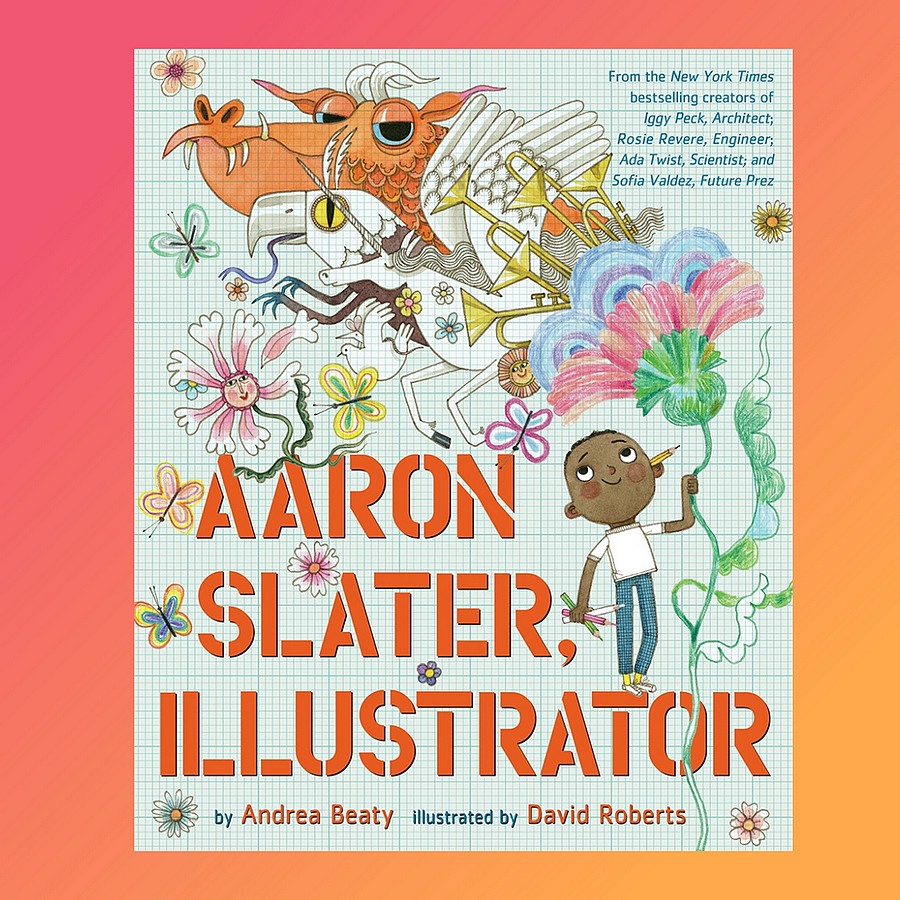
We have been fans of the Questioneer series for many years with our favourite books including Iggy Peck, Architect, Ada Twist, Scientist and Rosie Revere, Engineer. The latest in this series is a glorious story that touched our hearts. The newest title is Aaron Slater, Illustrator by Andrea Beaty and illustrated by David Roberts. This is a beautiful book about the power of storytelling, imagination, creativity and art. It is also a story about having the courage to find your voice and see the beauty and power in standing out.
Aaron Slater, like my younger daughter has dyslexia and they share many common traits. They both adore stories and being read to, they both struggle to communicate ideas in a written format and they imagine stories in stunning, vivid, detailed pictures.
This story begins when Aaron was a baby and he blissfully soaked up family story time. His family has a cherished and cosy reading ritual where they all come together and read stories on the garden swing. Sharing stories with his siblings and two mums is a time of joy for Aaron, a time when he feels content.
From a very young age Aaron would create masterpieces. He was often seen with paint covered hands, or clutching pencils or crayons as he drew on an easel; he was a wizard with a chalk and could transform a bland footpath into a scene of beauty that would spark joy for all who saw it. While he loved to create, his heart was set on being able to write stories. He thought this would be the greatest of things.
As he grows older, he begins to start the process of learning to read. He becomes perplexed as to why this is such a struggle for him. Despite his strong desire to conquer this, the words don’t make sense as they appear as squiggles. He decides to return to drawing.
Finally, he is old enough to start school. Aaron could not be more excited and turns up to his first day in the brightest of clothes, full of enthusiasm, eager to learn and especially excited to learn to read. As the school year progresses it becomes increasingly clear to Aaron that he won’t be able to read like his friends and “since he’ll never stand out, he decides to blend in”. These words are painful to read. The expressive illustrations show Aaron going from a bright eyed, confident learner, to a boy that has become dejected. He feels alone and different. The astute reader will discover in the illustrations he is not alone, others in his class struggle with reading and writing too.
Miss Greer sets her class the task of writing a story. My daughter and I believe this book does a brilliant job of describing and illustrating the emotions and feelings associated with this task for someone who has dyslexia. The feelings of isolation, so desperately wanting to achieve the task, the frustration, the exhaustion, the dread, the physical symptoms that transpire, the resilience, the perseverance shown, the strength and courage involved in turning up to school knowing that your work will be of a very different standard to everyone else’s (if accommodations have not been made).
When it comes to Aaron’s turn to tell his story, he struggles to share any words from his paper. But he does find his voice, as he paints a picture with his evocative words and descriptive images as he closes his eyes and imagines his story as illustrations. Aaron shares the most magical story and has his class spellbound. Aaron learns the life changing lesson that he is capable of great things and he can stand out.
This is an uplifting, lyrical story that celebrates creativity, perseverance, difference and diversity. There is a cast of characters featuring diverse families, abilities and experiences. This book would be a wonderful gateway to conversations about how people learn differently and that when someone’s brain works differently it does not mean they are less intelligent. My daughter, like so many other children, will see themselves in Aaron Slater.
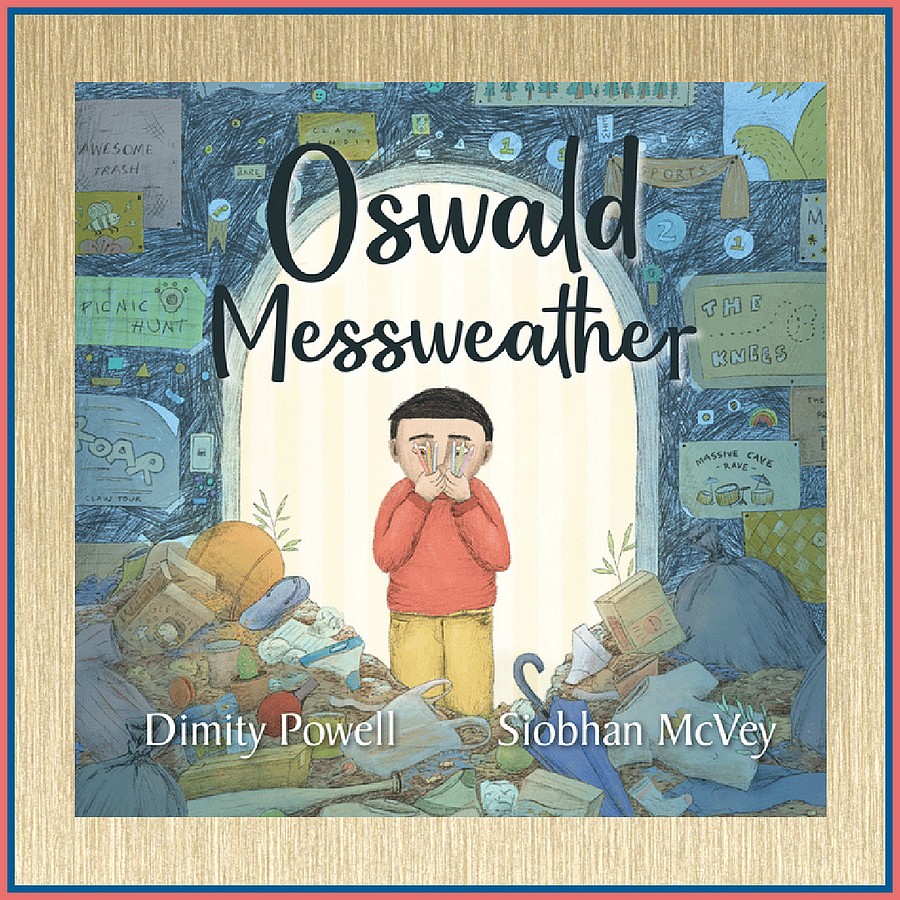
Oswald Messweather by Dimity Powell and illustrated by Siobhan McVey is an absolute favourite picture book in our home, one that my younger daughter has read so many times she can recite it. Oswald Constantine Dorian Messweather does not like his messy name and the astute reader may pick up on the fact that the initials from Oswald’s first names form an acronym, OCD. This picture book explores the debilitating feelings associated with living with OCD in a sensitive and hopeful way.
The sight of a mess and even the mere thought about the possibility of chaos has Oswald’s legs jiggling and his palms itching. Any kind of disorder induces anxiety, consumes his thoughts and is utterly overwhelming for Oswald. This results in his head being filled with a tangle of worries. Oswald takes comfort from his crayons and always has them in his possession. He feels the relentless waves of anxiousness he experiences are reduced and calmed by counting his crayons. This is an arduous and isolating compulsive process for Oswald.
School is not an easy place for Oswald. Thankfully he is blessed with a wonderful, caring and dedicated teacher, Miss Mopp, who recognises, values and celebrates Oswald’s many brilliant strengths. She directs him to use his skills to record the results for a group work project. Miss Mopp sees that this task needs to be neat, precise and must be completed by a student who will present the findings in an eye-catching format. Oswald not only records the group’s results as requested by Miss Mopp, but excels in this task. Oswald shines. Now that Oswald has experienced a sense of calm by using his attention for detail, thorough approach and his creativity to complete a group project successfully, he gains confidence in using these skills as a possible strategy, a coping tool, which he can employ to help ground himself.
Siobhan McVey’s illustrations bring Oswald, his fears, challenges, successes, triumphs and journey with OCD to life. Throughout the story, pattern and colour are used and change to reflect Oswald’s journey. The colour palette at the beginning of the book is limited and neutral but as Oswald becomes more au fait with tools that may be useful to manage his emotions the pages become less chaotic and more vibrant, colourful and hope filled.
“Ossie” as he is affectionately known in our home is such an endearing character and one that has opened up conversations about OCD. Oswald’s story highlights that everyone has something wonderful to contribute and as Dimity Powell wrote in her dedication in our copy of this book, “you can’t always stop the waves, buy you can learn to sail over them’’.
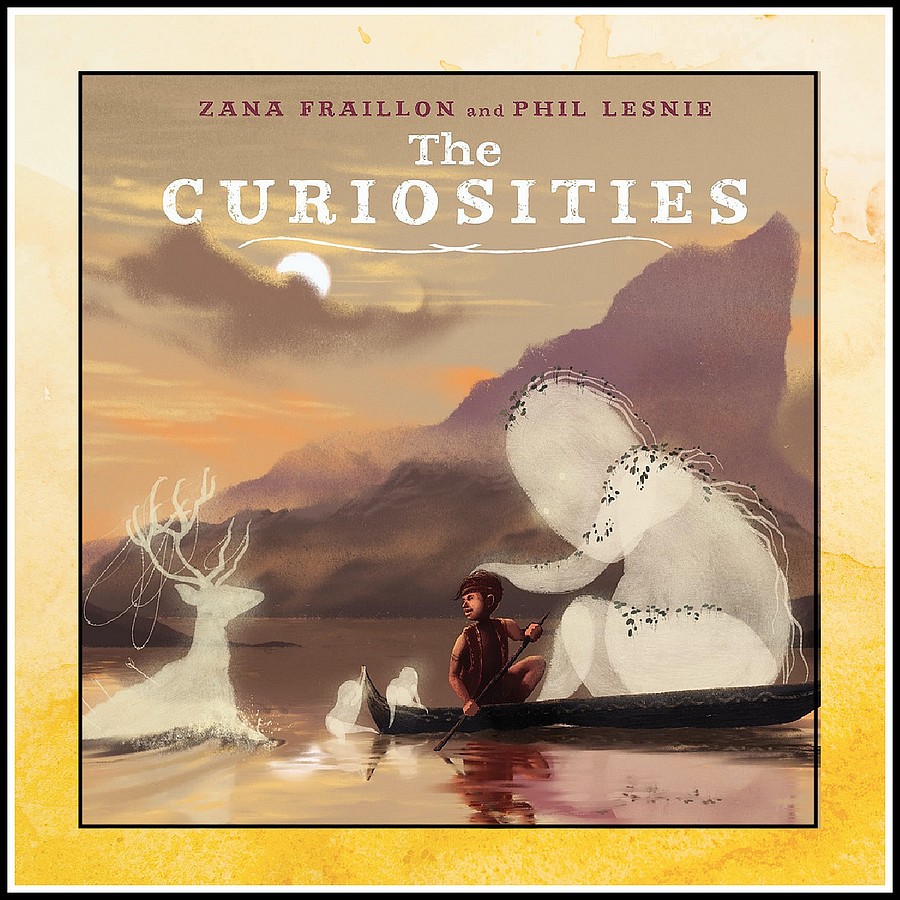
The Curiosities by Zana Fraillon and Illustrated by Phil Lesnie is an enlightening, powerful and sophisticated story following a young boy’s journey and experiences with living with Tourette syndrome. The author has first-hand experience with this as her son was diagnosed with Tourette syndrome when he was 5. This personal connection makes this book even more special as the challenges and beauty that Miro, the young boy in the story experiences are sensitively portrayed with a deep, respectful and intimate understanding. This book is for anyone who feels and sees the world differently, for those that feel isolated because of their differences, for those that have found strength in community and ultimately everyone to be aware of differences and see the beauty in them. Embrace difference, recognise and celebrate the gifts and strengths that exist for those that have developed different pathways in their brains. We are all different as Zana notes in the back of the book, “people are disabled not by their impairment or difference, but by the way they are treated by society”. This is my personal lived experience as a mother to a daughter with two learning disabilities. Picture books like this are essential reading so that barriers can be broken down and negative connotations are not associated with difference. This book is a celebration of the beauty and power of difference, diversity and the pride associated with this.
In this story, the Curiosities, other worldly, white silhouette animal shapes, choose to accompany Miro throughout his days. Initially they are small, quiet and quite unobtrusive. As Miro begins to see, feel and experience the world differently, the Curiosities grow in size and become more prevalent in his life. This coincides with Miro discovering wonders and possibilities that go unseen by others. Soon the Curiosities are observed by others, gentle, discreet observations then turn to intense stares and glares. Miro feels overshadowed and consumed by the Curiosities, he begins to feel invisible as he is shunned by others. Miro begs the wild Curiosities to settle and leave him be. When Miro feels as though he has been swallowed up, the Curiosities are replaced with a single thread which is surrounded by an elder. This thread, like a connection, is strong and quickly multiplies. The threads entwine around others too, making connections between individuals. Miro learns that the Curiosities chose others too and he notices them in other people. He feels a sense of freedom and his world is open to infinite possibilities that gently beckon him.
The evocative language is beautifully complemented by the striking, mesmerising illustrations that are inspired by folklore of the Philippines. The creatures in Filipino mythology inspired the form of the Curiosities.
Be sure to savour the two different images on the front and back endpapers and the meaning of these.
This story serves as such a powerful gateway to conversations about neurodiversity, the positives, the challenges as well as responding to difference. Zana’s final sentence in her author note in the back of the book states, “We are, all of us, differently abled in different ways. Be proud” which is a central theme, one to be acutely aware of and celebrated.
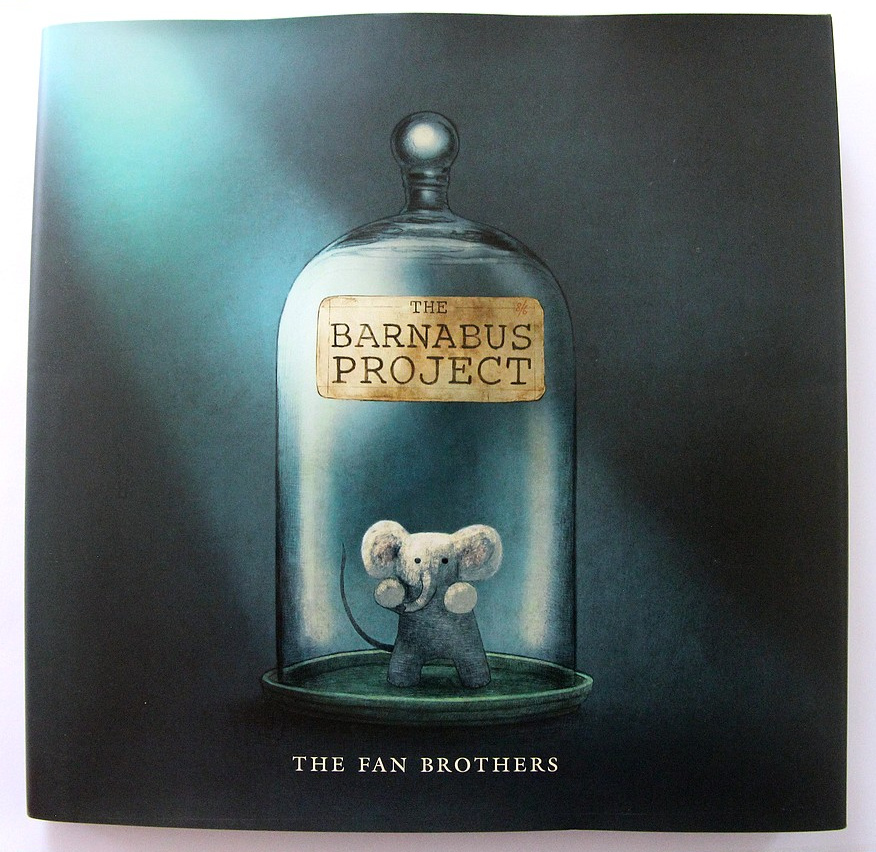
The Barnabus Project by the Fan Brothers (Eric Fan, Terry Fan with Devin Fan) tells the heart-warming story of Barnabus and his friends. Barnabus is half mouse and half elephant and has been labelled a failed genetically engineered perfect pet. Barnabus resides in a bell jar, in a secret lab underneath a pet store with other pets (including mushroom sloth and light-up Lois) who have also been deemed failures.
This is their tender, adventurous story that celebrates friendship, diversity, sticking together, courage, resilience, overcoming the odds and believing that anything is possible.
The stunning action-packed illustrations are mesmerising and brimming with intricate creative details. The failed pet creations are endearing, they will draw you into their mission and have you cheering for their successful completion.

Izzy and Gizmo written by Pip Jones and illustrated by Sara Ogilvie is an empowering story about persevering through challenges and learning from mistakes. After all, each mistake is one step closer to success. In this story, Isabelle’s resourcefulness and creativity knows no bounds when it comes to her inventions and she enjoys creating gadgets, with very interesting names. Her mind is often thinking of ways to repurpose items and create something new, so she always has her tool bag at the ready. All of her inventions have lots of components and sometimes this means they don’t work as she imagined. This frustrates Izzy and makes her feel like giving up. However, her wise and encouraging Grandpa teaches her that in order to succeed she must keep trying.
Izzy finds herself with a particularly great challenge when a very likeable crow, full of spunk, loses its ability to fly and needs her help. Izzy knows she needs to invent something to help the crow return to the skies. This is not an easy task to achieve. Her ideas require modifications and lots of problem solving if they are to succeed. Will Izzy give up, or will her imagination and determination drive her to invent a creation to help the crow fly? This engaging story is told in rhyme and contains sophisticated language. The lively, detailed illustrations make you smile and add another layer to this story with themes that include tenacity, resilience, growth mindset, creativity, empathy, team work and taking responsibility for your actions.
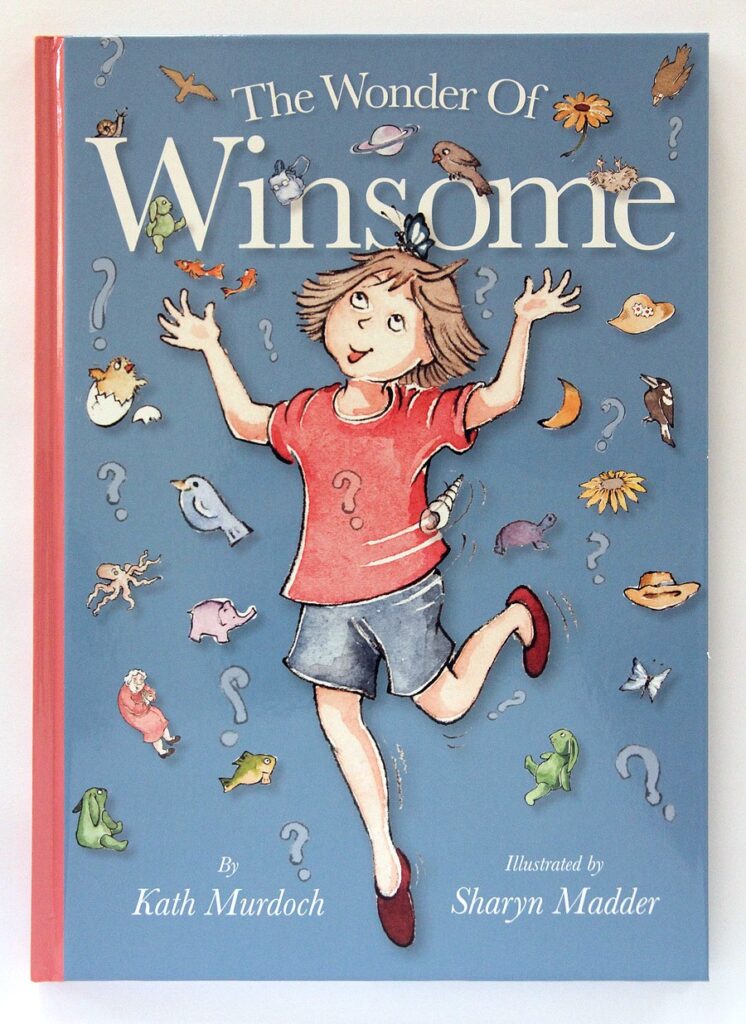
The Wonder of Winsome by Kath Murdoch and illustrated by Sharyn Madder is a picture book celebrating the power of asking questions as well as the immense joy that is evident when children’s curiosity and questions are invited and responded to in enthusiastic ways. This story highlights the beauty and thrill of asking questions as they can lead to unexpected journeys, experiences and adventures while gathering information to address them. As the story unfolds the reader also sees the damaging effects of a child’s curiosity being quashed. However, Winsome’s questions become impossible to ignore and lead to the most wondrous investigations as answers are sought.
This would be a perfect book to start Semester 2 with and use thereafter, as it is a wonderful invitation to encourage children to engage in curious conversations. This story inspires children and adults to be open, curious and perhaps plan an exploration based on a question that they are curious about. The lively illustrations add another layer to the colourful text and are full of details that pique the readers curiosity. This book inspires readers to value curiosity and playfulness, be open to the wonder in the world and use this to fuel engaging, memorable and dynamic learning experiences.
For more information about Kath Murdoch who is widely respected for her work in relation to inquiry-based learning visit this link https://www.kathmurdoch.com.au/kath
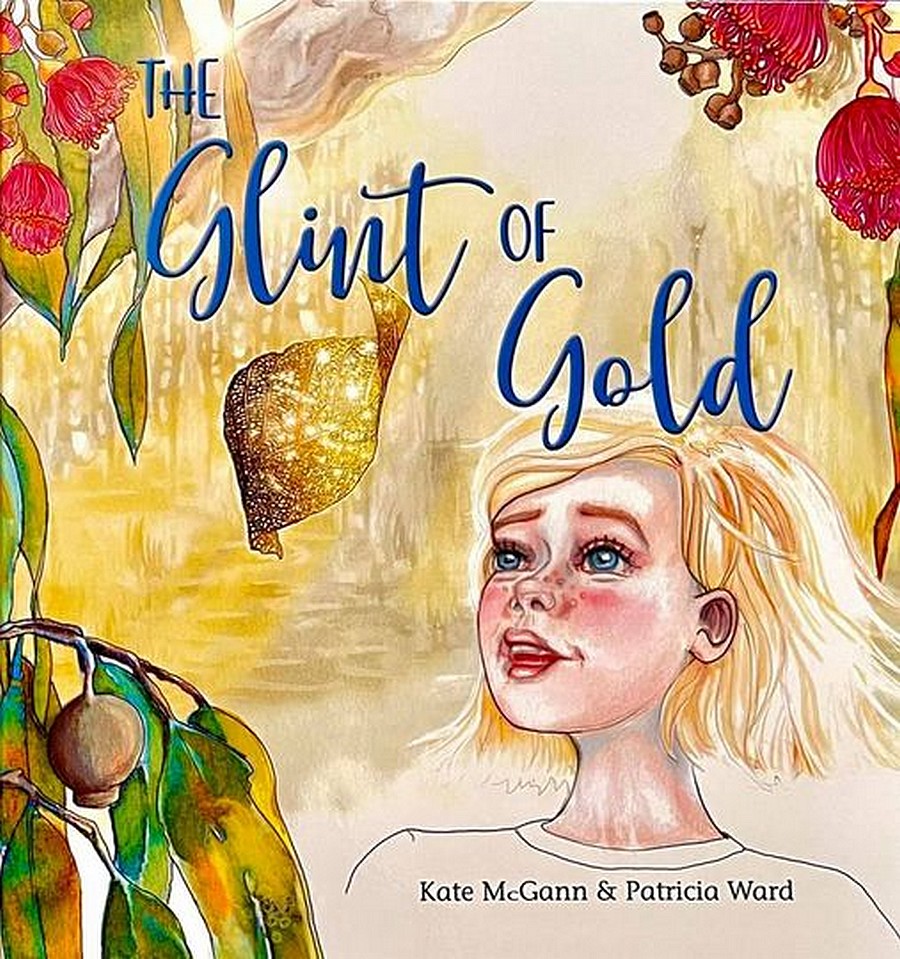
The Glint of Gold by Kate McGann and illustrated by Patricia Ward is a beautiful wise story of mindfulness, gratitude and hope. It is about the treasure, the times of beauty that shine and shimmer in a day, the experiences that make your heart swell; these are the glints of gold. They can be experienced in a multitude of ways as one can see, hear, smell and touch these golden moments. They can be unexpected and best of all anyone can BE a glint of gold.
This story begins with a powerful statement, “it’s there every day if you look for it. The glint of gold”. This knowledge empowers readers to be aware of the possibility, it is a timely reminder to take the time to be in the moment, to observe and be open to feel the beauty that exists and surrounds us every day. Whether this is in the form of gifts in nature (a blossoming tree or perhaps a sunset filled with an awe inspiring colour palette), an act of kindness or connecting with others. The reader then follows an insightful young girl on a journey as she shares her experiences with glints of gold she encounters throughout her day and she demonstrates how she tries to be a glint of gold in the lives of others. She also shares her observations about the ways she sees her family members being glints of gold. The story closes with her family sharing their glints of gold from the day, expressing gratitude for them and having the peace of mind to know that a new day will bring new opportunities for more gold to be discovered.
This story is timely as the world navigates the constantly changing and evolving situation with COVID. Despite a time of ongoing uncertainty and challenges, this book reminds us that glints of gold are ever present and they can be found in simple forms. The magic is in pausing to observe them in all their glory and being mindful of their presence. Sometimes they come at a time of despair when you need them most and if you pause to appreciate your surroundings, you will be able to notice these gifts.
The stunning vibrant watercolour illustrations capture nature in all its spectacular and colourful splendour. They exude the heart warming connection, joy and peace one experiences with being a glint of gold and those same feelings one savours when being gifted these golden moments.
This story inspires readers to pause and look for the glints of gold that exist every day and to observe others who may need a glint of gold gifted to them.
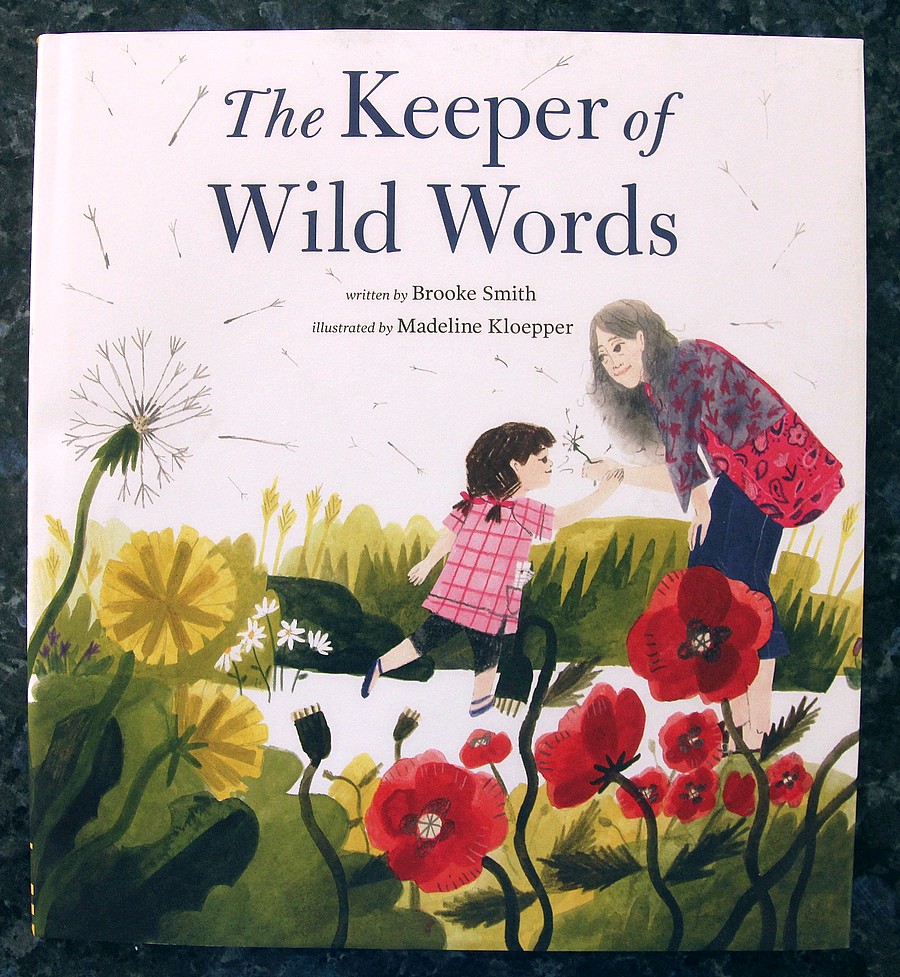
The Keeper of Wild Words by Brooke Smith and illustrated by Madeline Kloepper is a beautiful picture book that celebrates and makes wondrous some of the natural words that have recently been removed from the Junior Oxford Dictionary (natural words such as acorn, monarch and dandelion were cut from the dictionary and replaced with words such as analogue, chatroom and voicemail). This heartfelt tale begins when Brook visits her grandmother, Mimi and Mimi tells her about words and how they can disappear if they are not known, used and shared. Mimi has a list of words that she is concerned will disappear (inspired by the natural words that have been removed from the Junior Oxford Dictionary) and asks Brook if she could be The Keeper of these Wild Words. Together they go an adventure exploring their lush environment with a mission of finding all of the words on their list, or letting the words find them. Brooke Smith’s evocative language brings each word from the list to life and she engages the reader’s senses as each word is richly and vividly described. At the end of the book, Smith talks about her inspiration for this story and challenges readers to be keepers of words (there is even a sturdy envelope secured in the back of the book for children to store their words). This delightful book is a stunning celebration of words; the power of language; the awe and wonder to be found in the environment and the bond a grandchild and grandparent (in this case grandmother) share.
This book provides wonderful inspiration for a class to come together and be keepers of words. A class may choose to publish their very own book titled, ‘The Keeper of Wild Words’.

Thank you for sharing your ideas on these great back to school texts. I will certainly be looking for some of them to read and discuss with my new class.
It’s my pleasure Diane! I hope your class enjoy these books and that they inspire many engaging conversations.
Thank you for this helpful and inspiring read.
Clare, thank you for taking the time to comment and for your kind words.
Thank you so much for showcasing these wonderful books. These are perfect books to read for the Book Week theme this year-Read, Grow and Inspire.